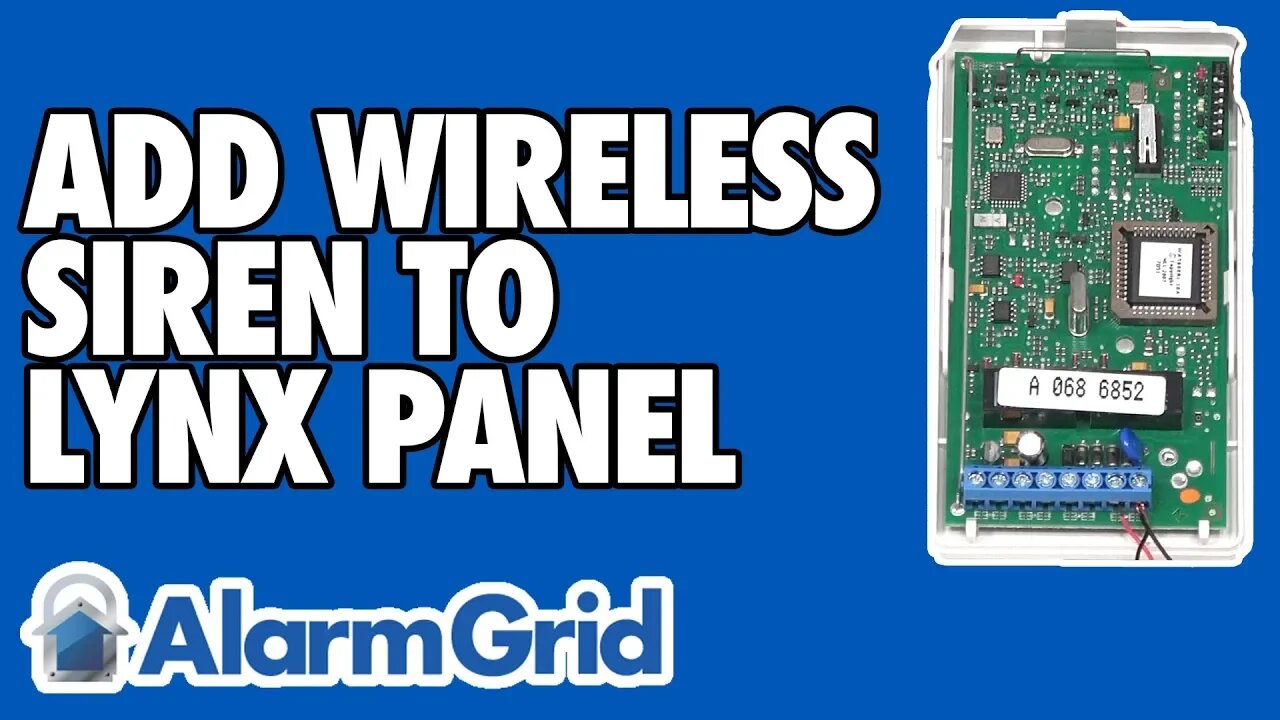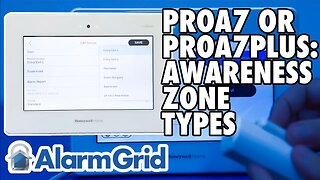Premium Only Content

Adding a Siren to My LYNX Touch Panel Using The Lynx-EXT
In this video, Joe demonstrates how to add an external siren to a Honeywell LYNX Touch System using the LYNX-EXT Kit. This kit is put together by Alarm Grid, and it includes everything a user needs to add a hardwired siren to the system and have it function wirelessly, minus the actual siren itself.
Adding a hardwired siren to a wireless panel like a Honeywell LYNX Touch is a bit more involved than adding a wireless siren. A hardwired siren requires a power supply and a relay that will only distribute power when an alarm is in effect. A backup battery is also needed so that the siren can activate when the power is out.
What's special about the LYNX-EXT Kit is that it allows a hardwired siren to communicate wirelessly. This way, the panel won't need to have any hardwired connections. All communication from the panel will be with the wireless relay. In this case, a Honeywell 5800RL is used. The panel will wirelessly alert the 5800RL, and the 5800RL will tell the Honeywell AD12612 Power Supply to send power to the siren for activation. This will occur during any alarm.
An important thing to note about the Honeywell 5800RL is that is requires bi-directional communication with the panel. This is necessary for getting the siren to stop when the alarm is cleared. Since bi-directional communication is needed, the 5800RL is enrolled using a 2-digit House ID. Only the LYNX Panels and VISTA Panels have this House ID. As a result, these are the only panels that can support the 5800RL. It will not work with other 345 MHz panels, like the Honeywell Lyric Controller and 2GIG GC2 or GC3.
Each LYNX-EXT Kit from Alarm Grid includes an UltraTech 1240 Battery, a Honeywell 1361-GT Transformer, a Honeywell AD12612 Power Supply, a Honeywell 5800RL Relay, and a metal enclosure. The user will still need to add the hardwired siren and the necessary wiring.
NOTE: Joe uses a strobe light in this video to prevent possible ear damage while testing. The 5800RL will provide a steady relay closure for a burglary alarm, and a pulsing relay closure for a fire alarm. For this reason, you would not want to use a strobe in this application if you had fire zones because the pulsing output will not allow the strobe to charge properly, and therefore it will not discharge properly. This is why when Joe sets off the fire alarm, you only see one pulse of the strobe before it stops flashing. If Joe had allowed it to proceed, it would have flashed again, but not in the normal manner expected upon an alarm.
-
 10:19
10:19
Alarm Grid Home Security DIY Videos
1 year agoPROA7 or PROA7PLUS: Awareness Zone Types
34 -
 37:22
37:22
efenigson
1 day agoWhat COVID Taught Me About Money & Control - Efrat Fenigson | Ep. 104
30.9K4 -
 1:20:56
1:20:56
Dialogue works
2 days ago $0.58 earnedCol. Larry Wilkerson: No Way Out for Israel - Iran & Russia — NATO’s Worst Fear
57.1K14 -
 10:37
10:37
TheSaltyCracker
20 hours agoMassive Brawl Breaks Out in Bass Pro Shop Over Bathroom
63.9K165 -
 16:40
16:40
Actual Justice Warrior
17 hours agoSydney Sweeney REFUSES To Apologize For Being White
43.4K52 -
 1:57:23
1:57:23
MG Show
22 hours agoTrump Makes Announcement; Erika Kirk 1st Interview
42.4K48 -
 8:01
8:01
MattMorseTV
16 hours ago $0.85 earnedTrump just GUTTED the ENTIRE SYSTEM.
87.7K116 -
 20:02
20:02
Nikko Ortiz
16 hours agoBlades And Sorcery Is The Ultimate Medieval Fantasy
25.7K6 -
 2:12:18
2:12:18
Side Scrollers Podcast
1 day agoSide Scrollers VTuber TAKE OVER with Kirsche, Rev Says Desu & DarlingStrawb | Side Scrollers
106K19 -
 29:15
29:15
BlabberingCollector
1 day agoHarry Potter X Fortnite, Fans Reee Over Trans Rights, NEW Audiobooks Are OUT, Wizarding Quick Hits
18.2K1